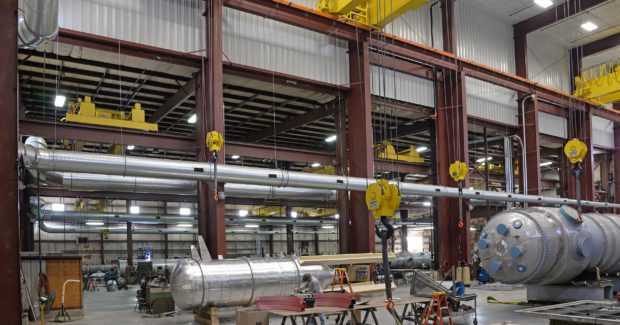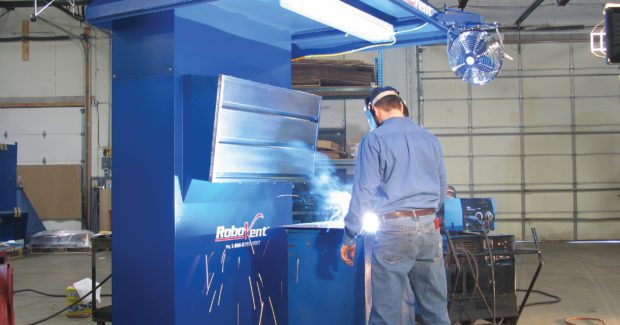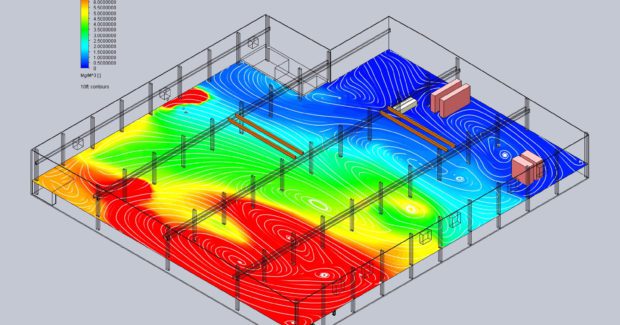A Look Ahead: Five Air Quality Trends to Watch in 2017 and Beyond
Modern air quality systems are smarter, more efficient and more effective than ever before. If you’re looking into a new air quality system, be sure to consider these future-focused trends.
Posted: October 26, 2016
Today’s air quality systems are smarter, more efficient and more effective than ever before – and they are only getting better! So what does the future look like? Here are five trends to watch for at FABTECH 2016 and in the coming years.
THE FUTURE IS CLEAN
Yesterday’s air quality solutions were primarily driven by the need for regulatory compliance. Tomorrow’s are likely to be built to address broader goals for better worker health and satisfaction, increased competitiveness and reduced environmental impact. Future-focused manufacturers are going beyond meeting minimum regulations and looking for air quality solutions that can help them meet their strategic goals. Many shops see clean air as a competitive advantage when it comes to attracting and retaining qualified workers. Today’s welders and skilled manufacturing workers are more aware of the potential health risks of weld fumes and particulates and less willing to work in environments where their expectations are not met. With continued projections of skilled labor shortages through 2020 and beyond, recruiting and retention are an ongoing concern for many companies. Cleaner, healthier facilities can help.
Companies are also driven by a desire to be good stewards of their employees’ health as well as the environment. For this reason, many manufacturers are moving towards more stringent voluntary air quality standards from the American Conference of Governmental Industrial Hygienists (ACGIH; Cincinnati, OH) for indoor air quality and choosing filtration systems that collect fumes rather than venting them to the outdoors. Following these guidelines helps shops maintain positive relationships with their employees and communities and prepares them to meet future health, safety and environmental regulations. These trends are driving improvements in air quality system design. Factories are demanding solutions with higher capture efficiency and more effective filtration. Some specific trends to look for include:
- More effective source capture solutions that do a better job of keeping fumes out of the breathing zone.
- New, more powerful fume guns that provide > 95 percent source capture in a streamlined nozzle that is less bulky and easier to manage than older models.
- Hybrid systems that include both source capture and ambient solutions to meet more stringent air quality standards.
THE FUTURE IS ENERGY EFFICIENT
Energy efficiency is important to most manufacturers, both to control costs and to reduce their environmental footprints. Ventilation and dust collection equipment can consume significant amounts of energy. Smart system design can help to reduce the energy needed to achieve desired air quality outcomes. One way to reduce energy consumption is to choose filtration systems over ventilation and makeup air systems. Ventilation systems are cheaper to install initially, but can result in significant energy loss when heated or cooled air is vented to the outside and outdoor air must be heated or cooled to indoor temperatures. Another way to control energy costs is to reduce the volume of air that must be moved. Collecting fumes closer to the source will reduce airflow requirements and thus energy use. Some energy-efficiency features to look for include:
- High-efficiency source capture solutions and streamlined hood designs that reduce airflow requirements.
- Energy-saving features like Variable Frequency Drive (VFD), which automatically adjusts the blower speed to compensate for filter loading.
- Smart control systems that automatically turn dust collectors on when they are needed and off when they are not.
THE FUTURE IS DATA DRIVEN
Data now infiltrates every aspect of our lives, from fitness trackers that monitor the number of steps we take to banking apps that quantify our spending habits. This same drive for data is now impacting air quality system design and selection. Accurate air quality data can help companies understand how their facilities stack up against similar facilities in their region or nationwide, so they can set effective benchmarks and make sure they are staying competitive in the job marketplace. Shops can use dust concentration meters to gather baseline measurements before installing a new system and quantify improvements achieved with the new system in place.
Periodic measurements can help manufacturing plants monitor the effectiveness of their systems and make adjustments as needed. Measurements taken over a period of time – perhaps over the course of a shift or over several days – can provide a clearer picture of how production cycles impact air quality that can be used to design more effective and efficient solutions. Data can also help companies plan maintenance activities in order to reduce downtime and control maintenance costs. Dust collectors equipped with smart control systems can monitor system performance and make predictive recommendations based on performance data.
THE FUTURE IS AUTOMATED
Increasingly, data is being put to work to automate air quality systems. For example, the eQ Air Quality System continually monitors air quality and automatically turns air quality systems on or off as needed. Over the next few years, air quality will become more and more automated as the “Internet of Things” comes to the factory floor. While many of today’s environmental systems are already centralized and programmable, tomorrow’s systems will use data and machine learning in order to program themselves.
Smart, Internet-connected control systems are able to respond to sensor data such as particulate levels or temperatures and make decisions to improve safety, performance and energy efficiency. These learning machines are driven by sophisticated algorithms that can analyze data coming in from sensors and operator inputs, make predictions about future needs, and proactively adjust the equipment settings to meet specific goals. For example, they may dynamically adapt blower speeds to compensate for particulate levels or filter loading, adjust system settings based on use behaviors to maximize filter life and energy efficiency, and notify users or repair technicians if attention is needed.
Eventually, smart systems – including HVAC, lighting, dust collectors and other environmental controls – will all be designed to work together using real-time sensor data. We are already working on a system that will monitor light levels, noise levels, CO levels, temperature and humidity along with air quality.
THE FUTURE IS FLEXIBLE
Today’s manufacturers are under increased pressure to be able to quickly change production lines and schedules in order to meet changing global demands. That means air quality systems must be more flexible as well. A few trends to watch:
- Dust collectors are getting smaller. Small, powerful collectors like the Spire take up less floor space and are easier to move when production needs change, making them ideal for manufacturers who need flexibility.
- Traditional ducted push-pull ambient systems may soon be replaced by ductless ceiling-mounted collectors. These systems generate ambient airflow patterns that collect dirty air and return clean air to the facilities, without the ducts. This makes them easier to install and move than traditional ducted systems.
- Grid-based ducted systems with modular, interlocking components that snap together like children’s plastic bricks make it easy for companies to move components of the air quality system as their needs change.
If you’re assessing a new air quality system now, be sure to consider these future-focused trends. Today, there are more options available than ever before. A qualified air quality system engineer can help you find the one that is best for you.














